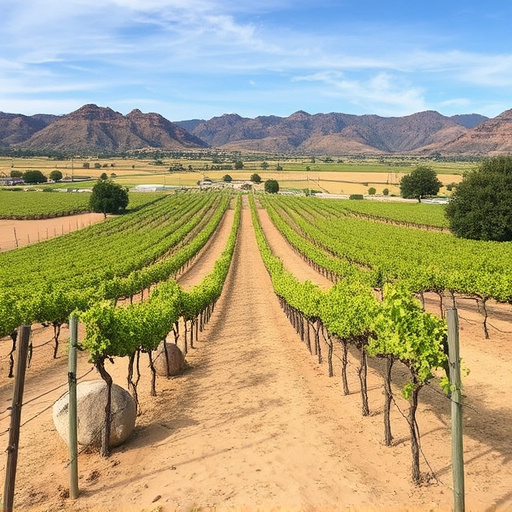The Sonoita region in Arizona boasts diverse microclimates ideal for wine production, with varying temperatures, sunlight, and soil conditions influencing grape characteristics. This unique landscape allows winemakers to cultivate a variety of grapes, resulting in distinct wine styles, from complex, flavorful varieties to crisp, acidic blends. Careful consideration of these factors ensures Sonoita's reputation as a premier wine-producing area, attracting viticulture enthusiasts with its distinctive vineyards and high-quality wines.
Explore the enchanting world of microclimates in the vibrant vineyards of Sonoita, Arizona. This region, renowned for its diverse terroirs, offers a unique opportunity to compare wines from neighboring properties. Delve into the intricate study of how local variations in temperature, sunlight, and wind influence grape ripening and flavor profiles. Discover the distinct characteristics that set each vineyard’s wine apart, while exploring both the advantages and challenges microclimates pose to winemakers in this captivating Arizona region.
- Understanding Microclimates and Their Impact on Wine Production in Sonoita, AZ
- A Comparative Study of Nearby Vineyards in the Region
- Uncovering the Unique Characteristics of Each Vineyard's Wines
- Exploring the Benefits and Challenges of Microclimate Variation for Local Winemakers
Understanding Microclimates and Their Impact on Wine Production in Sonoita, AZ
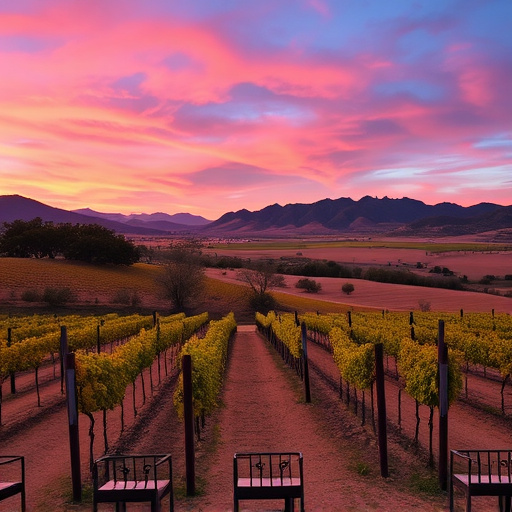
In the heart of Arizona’s Sonoran Desert, the Sonoita region stands out for its unique microclimates, which significantly influence wine production. Microclimates refer to small-scale climatic conditions that differ from the surrounding area due to local geographic features like valleys, hills, and bodies of water. These localized weather patterns play a crucial role in shaping the characteristics of grapes grown in nearby vineyards.
Each vineyard in Sonoita experiences varying temperatures, humidity levels, and sunlight exposure, leading to distinct wine profiles. For instance, vineyards nestled in cooler valleys benefit from delayed onset of heat, allowing grapes to mature slowly and develop complex flavors. In contrast, those situated on sunnier slopes tend to ripen faster, producing wines with higher alcohol content and brighter fruit notes. Understanding these microclimates enables winemakers to select grape varieties best suited for their specific locations, ultimately contributing to the diverse and high-quality wines that have earned Sonoita its reputation as a premier wine-producing region in Arizona.
A Comparative Study of Nearby Vineyards in the Region
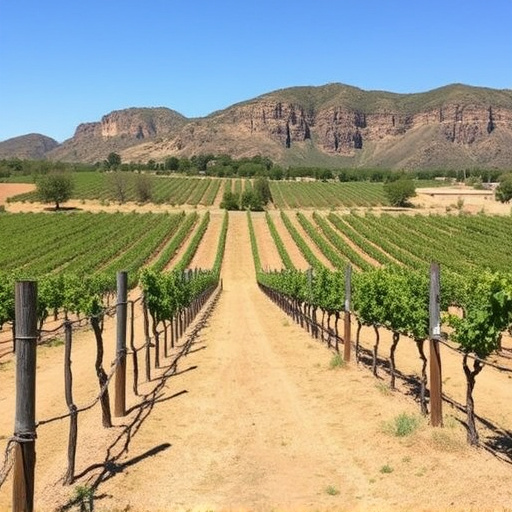
In the heart of Arizona’s Sonoita region, a fascinating comparison unfolds between neighboring vineyards, each with its unique microclimate. This area has established itself as a prominent wine-producing region, showcasing the diverse terroirs that contribute to the distinctive character of their wines. By examining the nearby vineyards, we uncover a captivating story of geographical variations and their impact on grape cultivation.
The proximity of these vineyards allows for an intriguing study where subtle differences in temperature, sunlight exposure, and soil composition create distinct microclimates. For instance, some vineyards benefit from the region’s warm days and cool nights, ideal for slow-ripening grapes that develop complex flavors. In contrast, others may experience more moderate temperatures, fostering a slightly cooler climate that influences grape varietals with crisp acidity. This comparative study not only delights wine enthusiasts but also highlights the art of viticulture, where the interplay of nature’s elements crafts the unique wines that define Sonoita as a premier wine-growing destination in Arizona.
Uncovering the Unique Characteristics of Each Vineyard's Wines
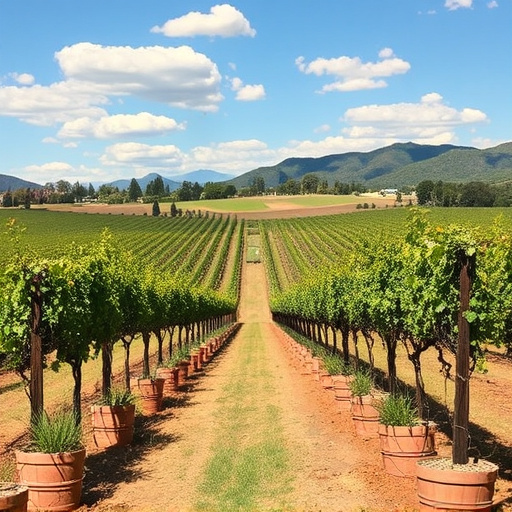
Unveiling the secrets of each vineyard in the Sonoita region of Arizona, wine enthusiasts are treated to a remarkable experience. Each microclimate within these neighboring vineyards contributes to the distinct character of their wines. The unique interplay of soil composition, elevation, and sun exposure creates a diverse range of flavors that captivate the senses.
For instance, some vineyards thrive at higher elevations, where cooler temperatures slow down grape ripening, resulting in wines with vibrant acidity and crisp tannins. In contrast, lower-lying areas experience warmer climates, allowing for slower sugar accumulation and yielding sweeter, more full-bodied wines. This regional variation ensures that wine lovers can discover a vast array of tastes, making the Sonoita region a true paradise for those who appreciate the art of viticulture.
Exploring the Benefits and Challenges of Microclimate Variation for Local Winemakers
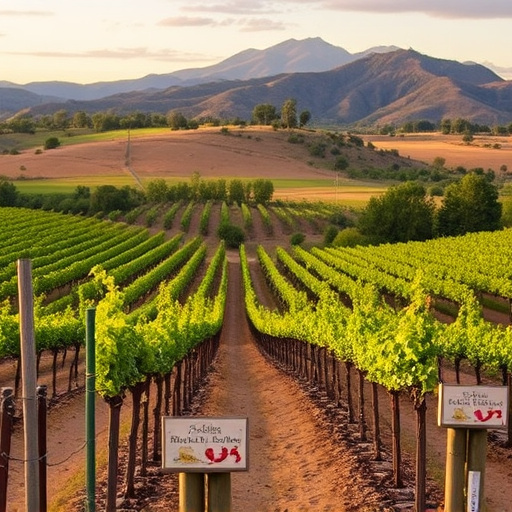
The unique microclimates found within the Sonoita region of Arizona present both benefits and challenges for local winemakers. On one hand, these subtle variations in temperature, sunlight exposure, and wind patterns allow for a diverse range of grape varieties to thrive. Winemakers can experiment with different blends and styles, creating distinct wines that reflect the specific characteristics of each vineyard. This microclimate diversity encourages creativity and offers consumers a broader selection of locally produced vintages.
However, navigating these microclimates also requires careful consideration and adaptation. Growers must closely monitor soil conditions, choose suitable grape varieties for each site, and implement tailored viticultural practices. The challenge lies in understanding the delicate balance between these factors to ensure optimal grape ripeness and quality. With precise management, winemakers can unlock the full potential of each vineyard, producing wines that showcase the unique terroir of Sonoita, AZ, vineyards.
The diverse microclimates within the Sonoita region in Arizona present a fascinating landscape for wine enthusiasts and winemakers alike. By comparing nearby vineyards, we’ve discovered that each vineyard’s unique location and conditions contribute to distinct wine characteristics. This variation offers both benefits and challenges for local producers, allowing them to craft wines that reflect the specific terroir of their vines. The microclimate-driven approach enhances the overall richness and diversity of Sonoita’s vibrant wine industry, making it a true gem for wine lovers exploring Arizona vineyards.
